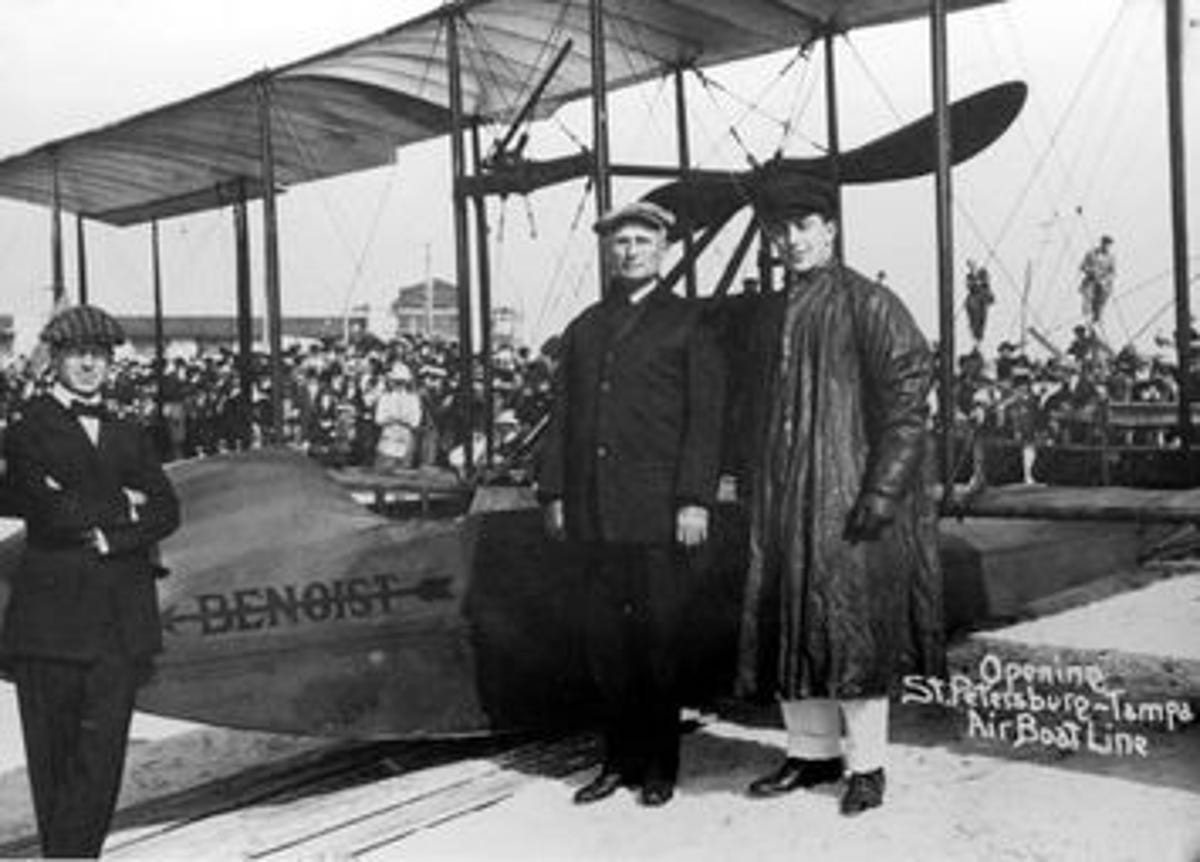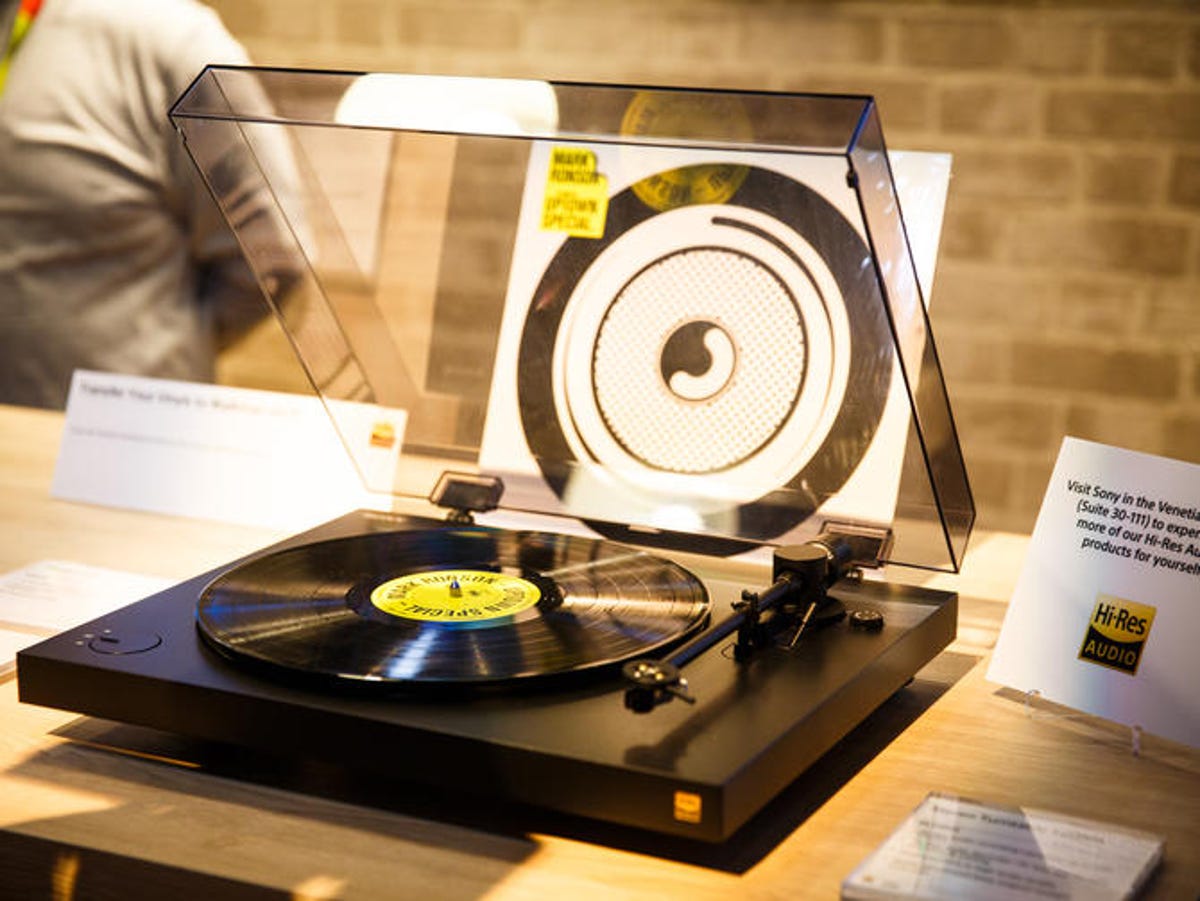Cubs World Series wins are rare. See all tech's gains in between
Technology has come a long, long way in the century-plus between World Series victories for the Chicago Cubs.

Planes start taking off
In 2016, the Chicago Cubs claimed a World Series title after an eternity in the sports world. They hadn't even appeared in the fall classic since 1945. They hadn't won it since 1908.
In the 108-year interim, humankind managed -- among other things -- to conquer the skies. On January 1, 1914, the first scheduled commercial airline flight soared across Florida, from St. Petersburg to Tampa. As the Cubs remained grounded in their World Series hopes over the next century, flight developed to the point where Uber just released its plans for on-demand urban air transportation.
First published November 1 at 5:00 a.m. PT.
Updated November 3 at 10:30 a.m. PT: Makes note of the Cubs winning the 2016 World Series.
Tunes for the first time
KDKA, the first commercial radio station, aired its first broadcast out of Pittsburgh on November 2, 1920. The Cubs that year finished sixth in the National League -- as the Cleveland Indians, their opponents in this year's championship, went on to win their first World Series.
Famous radio broadcasts since then include Orson Welles' historic 1938 "War of the Worlds" segment, tricking the US into believing aliens were invading the Earth. It was more believable than a World Series win for the Cubs. There are now more than 15,330 radio stations in the US, and endless options available on the internet.
Everyone starts watching TV
On January 27, 1926, Scottish inventor John Logie Baird gave the first public demonstration of the television in London, which at the time was still called the "televisor." Since then, the television has been revolutionized over and over again. It gained color, slimmed down from the thick cathode ray tube set to a wall-mounted flat screen and connected to the internet as the smart TV. Today's generation of TV viewers can watch their shows through computers and phone screens in their pockets. Diehard Cubs fans can now watch their beloved team from pretty much anywhere.
‘The First Robot’ which isn’t really a robot
In 1934, London professor Harry May showed off "Alpha" as the most perfect "robot" in the world. He asked it questions and Alpha answered accurately, with a radio inside its chest playing prepared statements, according to Time Magazine. Since then, robots have become a reality, sweeping your homes, playing Beer Pong and making crappy sandwiches.
Going under the sea
French duo Émile Gagnan and Jacques-Yves Cousteau created the aqua-lung in 1943, opening up underwater exploration for divers everywhere. Who knows what secrets are at the bottom of the ocean? Hidden treasure? Sunken ships? The secret to winning the World Series?
The first computer was bigger (and more expensive) than a house
Long before your desktops and laptops, there was the ENIAC. Scientists at the University of Pennsylvania began building it in 1943 and didn't finish it until 1946. The 28-ton computer had 17,840 vacuum tubes inside and cost $487,000. The monstrosity maxed out at about 5,000 addition problems per second, not even a fraction of 1 percent of what modern chips can process. The lightest laptops today weigh in at just under two pounds.

A new record
The 45-rpm vinyl record was created in 1949 and it soon became the most common form of vinyl singles. Those records eventually were superseded by the 8-track, cassette, CD and MP3 -- and then made a comeback among hipsters. The Cubs and Indians finally made their comeback to the World Series just this year.
Transistors make everything smaller
The semiconductor device that became the foundation of modern electronics was invented by physicists John Bardeen, William Shockley and Walter Brattain on December 16, 1947. This is the reason your laptops, TVs and iPhones are so thin. As transistors continued to shrink, so too, it seemed, did the Cubs' chances of winning the World Series.
Apple’s empire begins
Steve Jobs was born in 1955. He sold the first Apple I home computer in 1976, was ousted from the tech giant in 1985, returned in 1997 and died in 2011 -- with at least two movies made about him shortly thereafter -- in a six-decade span of World Series frustration for the Cubs or Indians. Apple was a driving force behind the personal computer, digital music players and the smartphone, and in 2016, it was the most valuable tech company in the world, worth over $570 billion.
The Space Race
NASA was created in 1958 as the Cold War kicked off the Space Race. It put a man on the moon in 1969, but the Cubs and Indians still couldn't put a World Series trophy in Wrigley Field or Jacobs Field (now known as Progressive Field). In 2000, a decade after the Cold War ended, the International Space Station became a reality, with Russian cosmonauts teaming up with US astronauts to orbit the Earth for hundreds of days. Seriously, a man jumped 128,097 feet from space in 2012 before the Cubs could another World Series.
Picking up your phones from anywhere
The first commercial cell phone, released in 1984, was bigger than a catcher's mitt. Martin Cooper, Motorola's former vice president, made the first cell phone call on the DynaTAC phone to the head of research at Bell Labs just a year before, in 1983. The phones would get smaller and become handheld computers that fit in our pockets, leading up to Apple's first iPhone in 2007 and Google's first Android G1 in 2008.
Spinning the World Wide Web
The internet -- you know, what you're reading this on -- wasn't broadly introduced to the world until 1989, after Tim Berners-Lee wrote "Information Management: A Proposal." The first email had been sent in 1971, as a test for Arpanet, the blueprint for today's internet. Empires like Facebook (launched in 2004), Google (launched in 1997), and Amazon (launched in 1994) all grew as the web went on to take over the world. The entire planet can now connect instantaneously, watching clips of the Cubs and Indians on YouTube (launched in 2005) and complaining about it on Twitter (launched in 2006).
100 years later, a new energy source for cars
By 2008, a whole new generation of Cubs and Indians fans were born. Tesla Motors had just released the Roadster, the first electric car legal to hit the highways. This was an entire century after the first Ford Model T hit the public.
2016: To be continued
History will remember 2016 as the year the Cubs finally won the big one. It could also be remembered as the year Apple killed off the headphone jack, which was invented for telephone switchboards in 1878. Who knows what innovative technology will hit the world before the next time the Cubs or Indians come close to grasping World Series glory.

